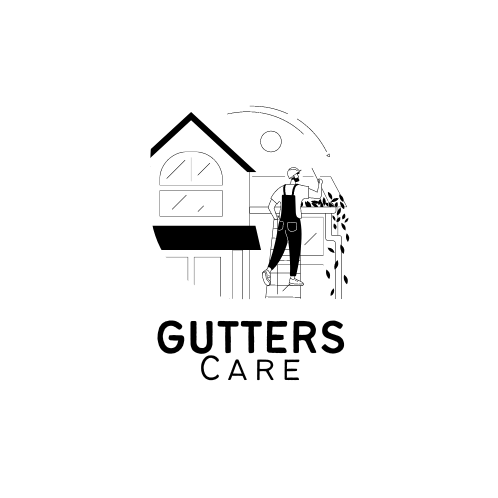Do gutters need to be removed to replace drip edge?
Gutters should ideally be removed during the roofing operation. According to roofing professionals, removing the gutters allows you to have a better grasp of the magnitude of possible roof issues. With the gutters removed, you can correctly install the roof with drip edge flashings and neatly seal the edges.
Your roof would be incomplete without gutters. By directing water away from the walls of the house, they safeguard its structural base. When a roof is replaced, do gutters also need to be taken down?
Gutters should be taken down before roofing is done. Roofing professionals will tell you that removing the gutters will allow you to see the full extent of any issues on the roof. Once the gutters are removed, you can install the drip edge flashings and seal the roof edges appropriately.
Three Reasons Why gutters must be removed prior to roofing
To Complete the Tear-Off and New Roof Installation
If your gutters are fastened directly to the roof, a roof replacement will be difficult without first removing the gutters. Gutters need to be taken down before the roof can be taken down.
If you leave the gutters in place, you might not be able to repair the parts that attach to the roof. If you take down the gutters, you can lay down underlayment and water and ice shields with ease.
Roofing contractors may need to remove and replace every shingle on an older roof.
To Prevent the Gutters from Being Damaged
In the process of removing the old shingles, the gutters may be damaged by the roof installers. Furthermore, damage could occur during the process of installing the new shingles.
As workmen transport roofing materials onto the roof, there is a considerable risk that the gutters will be damaged. Dents reduce the gutters’ effectiveness, while scratches make them look unattractive.
There’s also the risk of legal repercussions if any of the construction employees are hurt while working on your property due to the broken gutters.
To Ensure Correct Gutter Reinstallation
The old gutters must be removed so that the new ones may be installed in a manner appropriate to the new roof. Professional gutter installers will make sure the gutters are sloped appropriately for the new roof.
Damage to the roof, fascia, and foundation can occur if the gutters are not pitched properly. Consequently, even newly built roofs have issues, such as water collecting at the foundation, wood rot, and leaks.
Taking the gutters down also allows you to see if the gutters are worn out and in need of replacement.
Why do some roofers leave gutters in place when replacing the roof?
If you’re changing your roof but don’t want to remove your gutters, you can. If the gutters are not in the way of the roofing work, then the solution may work.
Instead of fastening gutters directly to the roof, some contractors choose to use a fascia board placed underneath the roof.
If the gutter system is detached from the existing roof, then you can replace the roof without disrupting the gutters.
If the gutters are in good shape, some roofers will opt to keep them in place.
The workers will take all necessary precautions to protect the gutters, such as the following:
- Avoid leaning ladders against them.
- Avoid concealing them.
- Avoid having so many people using that area at once.
Should Gutter Cleaning Come First If You’re Replacing Your Roof?
The gutters will be cleaned before and after the roofing operation if the crew plans to leave them installed. The roofers will start by removing the old roof, which will result in debris and splinters falling into the gutters.
Following a manual cleaning, the crew will utilize a leaf blower to get rid of any remaining dust and debris in the gutters. The workers absolutely must be able to work in a spotless, clutter-free setting. They will clean the gutters again after the roof is installed to ensure they are free of debris and working properly.
There are two primary justifications for performing an initial gutter cleaning:
1. To reveal any problems that may exist behind the gutters
When the gutters and surrounding areas are clean, any structural damage to the roof’s edges or gutters can be observed.
Cleaning the gutters allows the crew to spot issues with the roof’s seal around the edges or any preexisting structural damage that could influence the roofing procedure.
Animals are notorious for wreaking havoc on roofs and gutters, but the full extent of the damage is sometimes obscured by fallen leaves and other forms of debris. As soon as the gutters and roof are clean, the issue is immediately obvious.
2. To Keep Roofers Safe While They Replace It
Picture yourself balancing on a tightrope between skyscrapers while completely blind. It’s risky because you can’t see where you’re going on the rope and have to rely on feeling alone.
But the roofing crew had to use their sense of touch to get past the soiled roof and gutter. Consequently, the likelihood of them tripping and getting wounded on the job rises.
The goal of the post-roofing cleanup is to restore a pristine appearance to the roof and gutters. Maintaining a clean and tidy work site for the benefit of the client is a matter of good business etiquette.
Roof Gutter Removal: What to Expect
The roofing staff is going to check out your gutters to see what kind of attachment method was employed. Fixings like screws, rivets, or nails are all fair game here. The nails will be driven in with a hammer, the rivets with a drill, and the screws with a screwdriver.
When removing, it is crucial to employ the proper equipment to keep the gutters in good condition. They will be replaced after the roofing is finished, after all.
The gutters usually come tumbling to the ground first. Heavy downspouts can cause damage to the gutters by weighing them down. And that’s why the crew had to get rid of them first.
Disconnect the brackets (or any other mounting gear) holding the gutters against the roof after the downspout has been safely removed from the home.
In most cases, you’ll need a second person to help you remove gutters. Unfastening the gutter’s many parts requires two people; one does the actual work while the other keeps everything in place. Just have the roofing crew take care of it.
When the roofers are finished, the gutter installers will return and reinstall the downspout and gutter to ensure a proper fit with the new roof.
[h3] Closing Remarks
When replacing a roof, any reputable roofing company will explain why the gutters will or will not be removed. They might decide to keep your gutters intact or take them down, depending on their condition. This means that whether or not the gutters remain on the house is not set in stone. This decision rests on the contractor.
More articles on gutters:
- Ultimate Guide to the Best Rated Leaf Guards for Gutters
- Ultimate Guide to Installing Leaf Gutter Guards: Say Goodbye to Clogged Gutters!
- Safe Haven Gutters vs. DIY: Which Is the Best Shield for Your Home?
- Ultimate Guide to Essential Gutter Cleaning: Tips, Tools, and Techniques
- Dangers of Stagnant Water in Gutters: Causes, Effects, and Solutions






